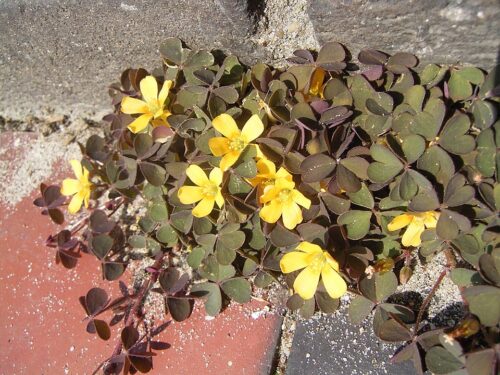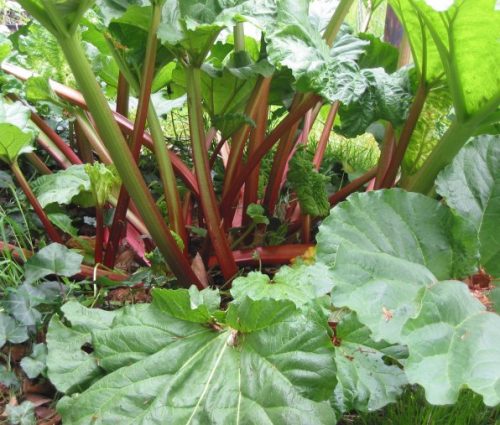Rhubarb is high in the natural toxin oxalic acid, especially in the leaves. It is often advised not to harvest rhubarb after June because then the oxalic acid content in the stems would be too high. Oxalic acid is poisonous, but rhubarb stems do not contain so much oxalic acid – not even after June – that you will get sick from eating them. The LD50 ( Lethal dose for 50% of subjects – the amount of poison that leads to death in 50% of the population) of oxalic acid is 375 mg per kilo (tested on rats). For someone who weighs 65 kg, that is about 25 g of oxalic acid. The content of oxalic acid in the leaves is + 0.5%. That means that you have to eat about five kilos of rhubarb leaves in one sitting to reach a lethal amount of oxalic acid. However, there are known cases of poisoning: during WWI in England it was advised to eat rhubarb leaves as a green vegetable.
The rhubarb stems contain significantly less oxalic acid than the leaves: 2 to 2.5% of the total acid content is oxalic acid; the rest is malic acid. The chance that you will get sick from eating rhubarb stems as a result of too much oxalic acid is therefore very small.
Oxalic acid can cause osteoporosis because it binds to calcium (bones!). It can also increase the risk of kidney stones; people with kidney problems are advised not to eat foods rich in oxalic acid, such as berries, beets, rhubarb and spinach.
A home remedy for too acidic rhubarb is to add a spoonful of lime when cooking. The lime neutralizes the oxalic acid by forming oxalates. The lime is sold as chalk (calcium carbonate) at the drugstore.

Creeping woodsorrel (Oxalis corniculata) also contains oxalic acid. The creeping woodsorrel is edible and has a lemony, sour taste.

